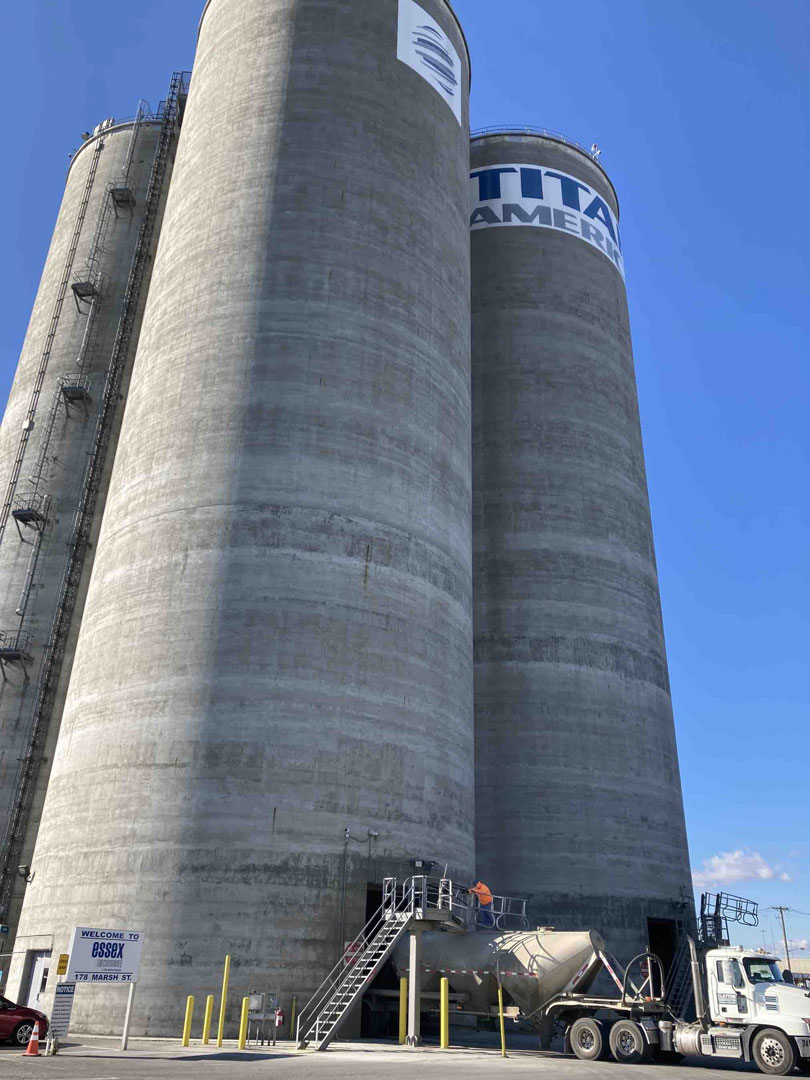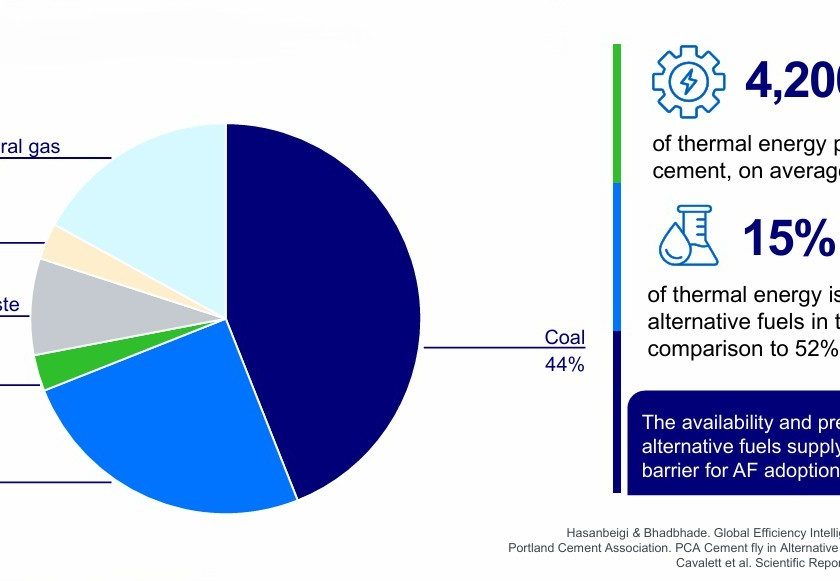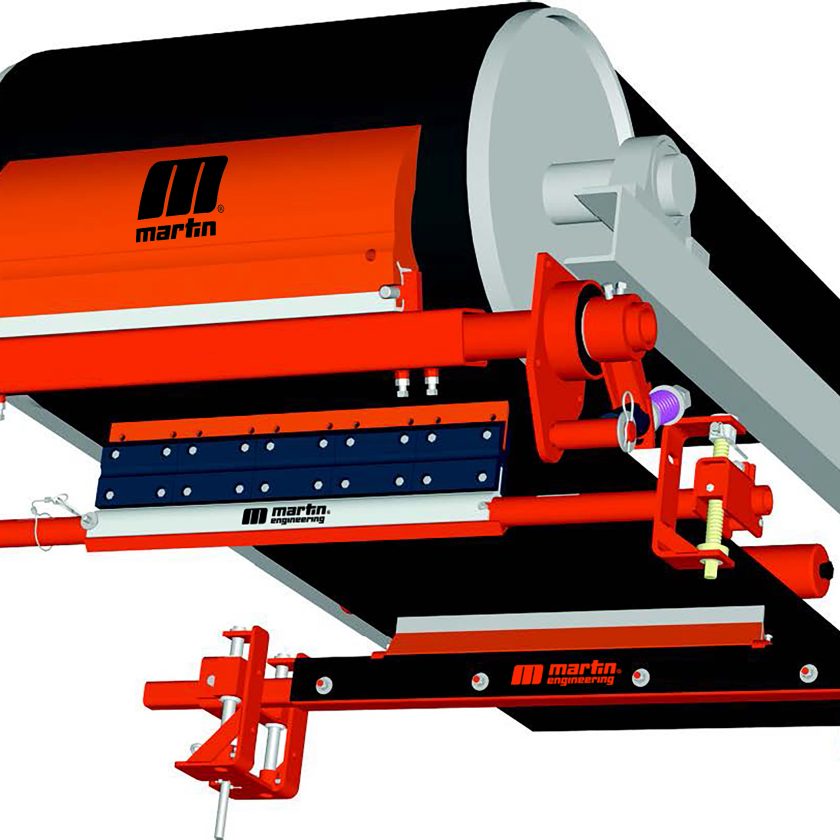Alternative Fuels Are Not Without Their Controversies And Challenges, Both In The United States And European Union.
By Jonathan Rowland

Cement Products spoke to the European cement association (CEMBUREAU) and the Portland Cement Association (PCA) about the use of alternative fuels in the European Union (EU) and United States. – Ed.
While widely acknowledged to be an essential element in the cement industry’s transition to carbon neutrality, the use of alternative fuels (AF) shows large regional variation. And even where utilization is relatively advanced, alternative fuels are not without their controversies and challenges.
“The use of AF in the European cement industry goes back more than 30 years,” said Nikos Nikolakakos, environment and resources manager at CEMBUREAU. “Since then, their use has continuously increased with the average substitution rate in the 27 EU member states now reaching 52%. There are also several cement plants that operate at a very high substitution rate (90% to 95%), and the trend is that more and more cement plants will reach that level.”
In real terms, this meant the EU cement industry used about 12 million metric tons of waste and industrial by-products as AF for clinker production in 2020. This helped avoid 21.2 million metric tons of CO2 emissions.
On this side of the Atlantic, adoption of AF began as early as the 1970s in the United States according to Rick Bohan, senior vice president of sustainability at the PCA. However, utilization rates have not kept pace with those in the EU.
“Current regulations often prohibit innovative approaches to reducing fuel emissions through increased use of materials, such as tire-derived fuel, non-recycled plastic and paper, and many other available lower-carbon secondary materials, as fuels,” explained Bohan. “In 2021, average AF utilization stood at 14.5%, a 1.2% increase from the previous year. The use of alternative and renewable fuels is rising industry-wide, however, with 70% of the U.S. cement manufacturing industry now utilizing these more sustainable energy sources.”
There are a number of interesting examples of AF use, continued the PCA executive:
- Caltrans is conducting roadside tire clean up as part of Clean California and coordinating with tire recyclers and the cement industry to avoid sending them to landfills.
- A few companies in California are beginning to sort and process manufacturing waste, such as paper, plastics and wood. Once the materials are sorted, they can be delivered as a high-value energy source to cement plants, where they are processed in a controlled environment.
- There is a cement plant using pistachio shells, as opposed to fossil fuels, displacing emissions from the fossil fuels.
“If a pistachio shell (or any organic material) goes to landfill, it decomposes and emits CO2 and methane, which is a much more potent greenhouse gas. If you utilize a fossil fuel for power, it also emits CO2,” said Bohan.
The benefit attached to the use of biomass fuels is thus twofold. “Utilize a pistachio shell as an alternative fuel at a cement plant, and CO2 is still emitted – but you are getting value from that, i.e. power generation. But you avoid the release of methane at landfills, and the emission of CO2 from the burning fossil fuels,” Bohan said.
“Cement plants are not just targeting increased use of biomass,” continued Bohan. “Our goal is clean, renewable energy. But if these organic emissions will occur regardless, a cement plant is an excellent solution for getting value out of those materials.”
Biomass also makes up about a fifth of the AF used at EU cement plants and is “particularly important as it is considered carbon neutral in the EU Emissions Trading Scheme,” added Nikolakakos. “As part of our 2050 roadmap, we are targeting 60% AF utilization rate, containing 20% biomass by 2030, and 90% AF with 50% biomass by 2050.”

Challenges to Increasing Fuel Substitution Rates
CEMBUREAU commissioned a report in 2017 that studied the status and prospects for AF utilization at EU cement plants. The study assessed the status of fuel substitution in 14 member statues and “found no major technological impediment to reaching a 95% thermal substitution rate,” said Nikolakakos. “Local factors constrain market potential to a much larger extent than the technical and economic feasibility of the cement industry itself.”
The first challenge identified in the report is the lack of adequate waste management systems. “The cement industry needs materials of sufficient quality for operating kilns, but this is not achieved when there is not adequate separate waste collection and treatment. In many countries, a substantial business incentive for the waste processing industry to produce high quality waste is also lacking,” explained Nikolakakos.
A second challenge is the low public acceptance of waste combustion, continued the CEMBUREAU expert. “This factor plays a major role in the political willingness to support permits for co-processing in a given country. Examples from certain countries show that public pressure can significantly limit the possibility of waste combustion.”
This is also seen in the United States where “community acceptance of alternative fuels and other technologies have proved to be challenging,” explained Bohan. “Misinformation and a lack of awareness of the risks and benefits of using discarded materials as a source of energy can create community opposition to improvements that would actually benefit surrounding communities through fewer environmental releases, waste diversion and reduced landfill, and associated public health and environmental impacts.”
“These considerations are particularly important as policymakers assess options for promoting environmental justice and economic recovery. Policymakers and regulators can help reduce opposition resulting from misinformation through transparent and accountable environmental justice and public education programs, as well as programs like EPA’s National Recycling Strategy.”
A final factor identified in the CEMBUREAU report is “excessive bureaucracy in regard to permitting,” said Nikolakakos. “When the industry is not allowed to utilize AF or when the permitting process is significantly delayed (thus distorting the business case), the potential to increase fuel substitution rates is substantially limited.”
Again, this is seen by the PCA with Bohan noting that “project permitting and facility regulations can pose significant barriers to investment and adoption of carbon reduction technologies, even when such technologies and practices are quite mature.”
Common examples include the Environmental Protection Agency’s (EPA) New Source Review regulations, which impose air permitting requirements on energy efficiency and modernization projects. The Non-Hazardous Secondary Materials (NHSM) rule also restricts the use of plastic, tires, and other low-carbon fuel alternatives at cement kilns.

The Potential of AF, And How to Get There
“The European cement industry has high ambitions to bring co-processing to new levels in the coming years,” said CEMBUREAU’s Nikolakakos. “Policy is expected to play a decisive role in reaching these targets. A central part of the EU’s Green Deal is the Circular Economy Action Plan, published in March 2020, which focuses on improving recyclability and re-use of products to reduce the overall amount of waste. The action plan provides an opportunity to support the review of EU waste policy to ensure greater circularity throughout the EU economy.”
In particular, CEMBUREAU believes that:
- Landfilling should either be banned across the EU or highly taxed by member states, and the export of waste outside of the EU should be minimized.
- An EU model for separate waste collection could simplify waste management, improve efficiency of resource flows, and ensure better access to alternative fuels for cement plants.
- The potential for fuel substitution should be further enhanced through legislative and regulatory measures that recognize this form of material recycling and its contribution toward EU recycling targets.
“In addition to the above – and having in mind the current energy supply crisis in Europe – the use of AF in the cement industry can contribute to improving Europe’s energy independence,” concluded Nikolakakos. “Relying on locally-sourced waste and biomass waste for operations, while at the same time phasing out the use of fossil fuels, will ultimately support fuel self-sufficiency.”
“Today the U.S. cement industry’s fuel mix includes just under 50% coal and petcoke,” said PCA’s Bohan. “The industry wants to cut that amount by a factor of five, with a goal of no more than 10% coal and petcoke use in 2050. AF are a fraction of the current fuel mix, and there is an opportunity to quickly scale up use to displace traditional fossil fuels.”
Echoing comments from Brussels, Bohan added that “current regulations limit the use of NHSM as fuels, even when those materials can be beneficially used in lieu of fossil fuels. The unintended consequence of these regulations often means materials that are fuels become waste.”
Policy priorities for the PCA therefore include:
- Reducing permitting barriers to use of NHSM fuels in industrial manufacturing.
- Treating waste-to-industrial energy (WTIE) as valid recycling use.
- Building robust recycling infrastructure and markets that incentivize the use of non-recycled material streams as AF.
- Community education and support for use of low carbon alternative fuels.
- Increasing the use of NHSMs diverts these materials from landfills.
Bohan ends on a positive note: “Cement plants are already equipped to use AF materials, provided the supply is available. With the right policies and regulations, AF could easily make up 50% of the U.S. cement industry’s fuel mix, as is the case in many other countries.”



